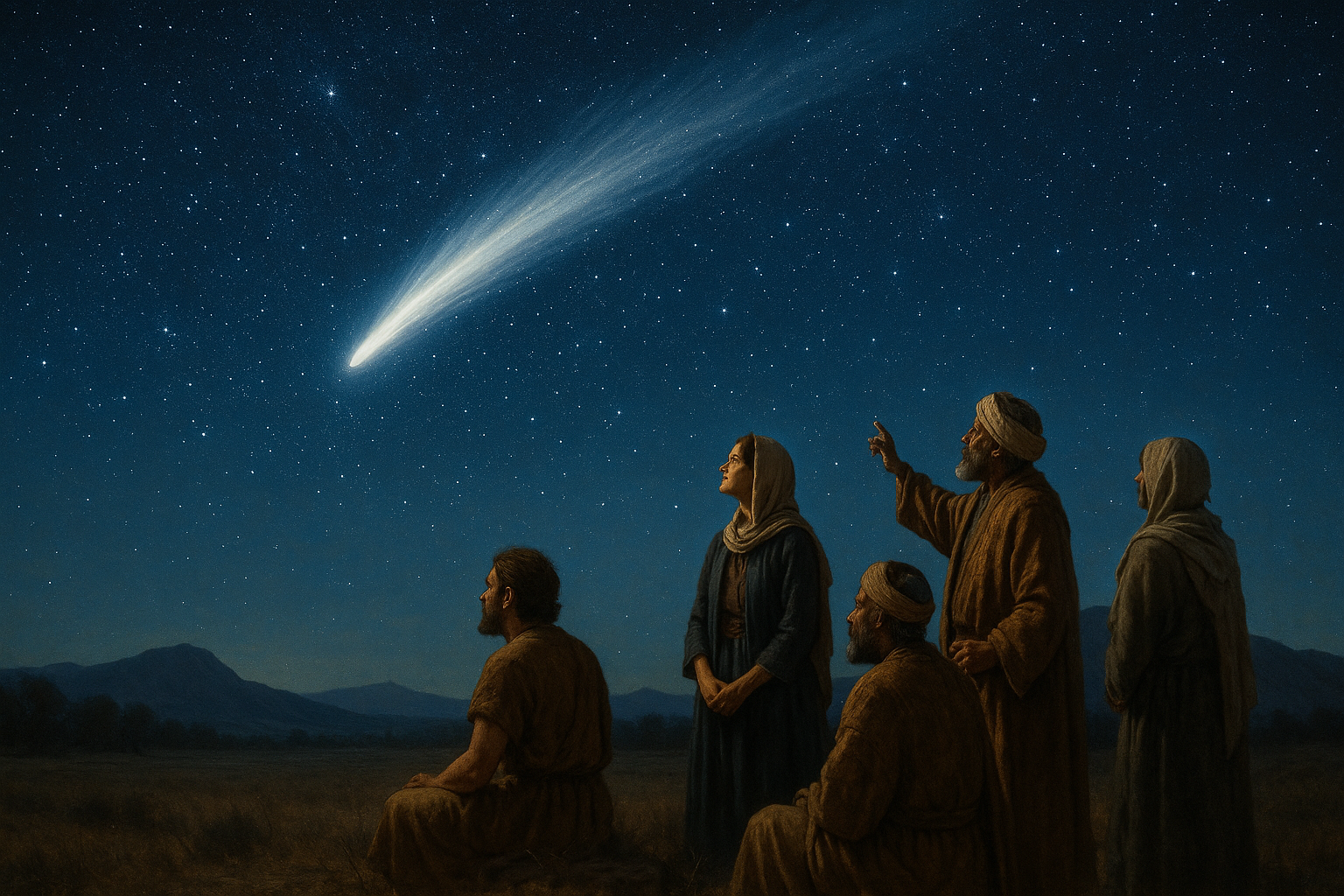In the vast tapestry of the natural world, animal behavior has always fascinated and mystified humankind. From the intricate dances of bees communicating the location of nectar to the majestic migrations of whales across the oceans, animals exhibit behaviors that are as complex as they are mesmerizing. As we delve deeper into understanding these behaviors, a new frontier emerges—one that intertwines the earthly instincts of these creatures with the cosmic rhythms of the stars. This fascinating intersection between zoology and astrology offers fresh insights into how animals navigate their lives, and more intriguingly, how we might harness these star signals for our own success. 🌟
Imagine a world where the movements of celestial bodies influence the behaviors of creatures here on Earth, guiding their actions and decisions. This is not just the stuff of science fiction; it’s a burgeoning field of study that suggests a profound connection between the cosmos and the creatures that inhabit our planet. In this exploration, we will uncover how animals use these astral cues to optimize their survival strategies and how, by unlocking these secrets, we might apply similar principles to enhance our own lives. From the migration patterns of birds that align with celestial navigation to the breeding behaviors of marine life governed by lunar cycles, the natural world is a symphony of actions conducted by the stars.
In this article, we will journey through a series of captivating topics, beginning with a look at historical perspectives on the relationship between celestial phenomena and animal behavior. We will explore cutting-edge research that unveils the mechanisms through which animals perceive and respond to astral signals. Additionally, we will discuss the practical applications of these findings, contemplating how businesses, individuals, and communities can integrate this knowledge for strategic advantage and personal growth. Whether you’re a wildlife enthusiast, a business strategist, or someone seeking inspiration from the natural world, this exploration promises to reveal the extraordinary potential of aligning our lives with the cosmic dance above. 🌌✨
Understanding Animal Behavior: An Intricate Dance
Animal behavior has long fascinated scientists and nature enthusiasts alike, offering a glimpse into the complex world of non-human creatures. The field of ethology, which focuses on the study of animal behavior, seeks to understand the motives, instincts, and communication methods of various species. By observing animals in their natural habitats, researchers aim to unlock the secrets of their interactions and decision-making processes. Such studies not only enrich our knowledge of wildlife but also provide insights into human behavior and the evolutionary links between species.
At the heart of animal behavior lies a delicate balance between instinct and learned behaviors. Instinctual actions, such as a bird’s migration patterns or a spider’s web-spinning abilities, are inherited and serve as survival mechanisms. In contrast, learned behaviors are acquired through experience and interaction with the environment. Both types of behavior are crucial for an animal’s adaptation and survival, allowing it to respond effectively to changes and challenges in its ecosystem.
Communication plays a pivotal role in animal behavior, facilitating interactions between individuals and species. From the intricate dances of bees to the complex vocalizations of dolphins, animals use various methods to convey information. Understanding these communication methods can help researchers decipher the social structures and hierarchies within animal groups, offering insights into their cooperative and competitive dynamics.
The Role of Environmental Cues
Environmental cues are crucial in shaping animal behavior, guiding migration patterns, feeding habits, and reproductive strategies. These cues can include changes in temperature, daylight hours, and the availability of resources. For instance, many bird species rely on photoperiod—a measure of daylight duration—to time their migrations, ensuring they reach breeding grounds during optimal conditions. Similarly, the availability of food sources can dictate the movement and social structures of animal populations.
The impact of environmental changes on animal behavior is a growing area of research, particularly in the context of climate change. As global temperatures rise and ecosystems shift, many species face challenges in adapting their behaviors to new conditions. Researchers are investigating how these changes affect animal populations and what it means for biodiversity conservation. By studying these adaptations, scientists hope to develop strategies to support species survival in a rapidly changing world.
Star Signals and Animal Navigation
One of the most fascinating aspects of animal behavior is navigation, particularly the use of star signals by migratory species. Many animals, including birds and marine creatures, have evolved to use celestial cues to guide their long journeys. This ability to navigate using stars is a testament to the incredible adaptability and intelligence of the animal kingdom.
Birds are perhaps the most well-known navigators, using the position of stars to travel vast distances during migration. Studies have shown that birds can determine their position and direction by observing constellations and the North Star, allowing them to navigate even when other cues are unavailable. This innate ability highlights the evolutionary significance of celestial navigation in ensuring the survival and reproductive success of migratory species.
Marine animals, such as sea turtles, also rely on star signals for navigation. These creatures travel thousands of miles across the ocean, guided by a combination of magnetic fields and celestial cues. Understanding the mechanisms behind such navigation can aid in conservation efforts, as it provides insights into the challenges these species face during their journeys. For a deeper understanding of how animals use the stars for navigation, check out this informative video: “The Starry Path: Animal Navigation” – NatureChannel.
Comparative Navigation Strategies
| Species | Navigation Method | Example |
|---|---|---|
| Birds | Celestial navigation using stars | Swainson’s thrush |
| Sea Turtles | Magnetic fields and star signals | Leatherback turtle |
| Bees | Sun positioning and polarized light | Honeybee |
Take a closer look at the table above to understand the diverse navigation strategies employed by different species. Each method reflects an adaptation to specific environmental conditions and challenges, showcasing the evolutionary ingenuity of the animal kingdom.
Behavioral Adaptations for Survival
Behavioral adaptations are vital for the survival and success of animal species. These adaptations can range from complex social structures to unique hunting techniques, each tailored to the specific needs and environments of different species. By studying these adaptations, researchers can gain valuable insights into the evolutionary pressures that shape animal behavior.
Predation is a significant factor driving behavioral adaptations. Many species have developed sophisticated hunting strategies, such as pack hunting in wolves or the ambush tactics of big cats. These behaviors not only increase the chances of capturing prey but also enhance cooperation and communication within animal groups. Understanding these adaptations can inform conservation strategies, helping to maintain ecological balance and biodiversity.
Similarly, anti-predator behaviors are crucial for survival, with animals employing various tactics to avoid becoming prey. From camouflage and mimicry to alarm calls and defensive formations, these behaviors are essential for evading predators. By studying these adaptations, scientists can identify key survival strategies and their role in maintaining healthy ecosystems.
Social Structures and Cooperation
- Camouflage and mimicry to evade predators
- Cooperative hunting techniques for capturing prey
- Complex social hierarchies to maintain group cohesion
Explore the above list to discover some of the fascinating behavioral adaptations that animals have developed to thrive in their environments. These strategies reflect the diverse and dynamic nature of the animal kingdom, offering valuable lessons in resilience and adaptability.
Harnessing Knowledge for Conservation and Success
The study of animal behavior has far-reaching implications for conservation efforts and human success. By understanding the behaviors and adaptations of various species, researchers can develop targeted strategies to protect endangered animals and preserve biodiversity. This knowledge can also inform sustainable practices, helping humans coexist harmoniously with wildlife and their habitats.
Conservation initiatives often focus on protecting critical habitats and mitigating the impacts of human activities on wildlife. By studying animal behavior, scientists can identify key areas for intervention, such as migratory corridors or breeding grounds. This information is crucial for developing effective conservation plans that address the specific needs and challenges of different species.
In addition to conservation efforts, the study of animal behavior can inspire innovation and success in various fields. From biomimicry in engineering and design to improving team dynamics and leadership strategies, the lessons learned from the animal kingdom can be applied to human endeavors. By observing and understanding the natural world, we can unlock new possibilities for growth and success.
The Future of Ethological Research
The future of ethological research holds exciting possibilities, with advances in technology and interdisciplinary collaboration driving new discoveries. From satellite tracking and genetic analysis to AI-powered data analysis, researchers are equipped with powerful tools to study animal behavior more comprehensively than ever before. These advancements are poised to revolutionize our understanding of the natural world and its inhabitants.
As we continue to explore the complexities of animal behavior, it is essential to prioritize ethical research practices and conservation goals. By working together, scientists, policymakers, and communities can ensure a sustainable future for both humans and wildlife. Embracing the lessons of the animal kingdom can guide us toward a more harmonious and prosperous coexistence.

Conclusion
Conclusion: Unlocking the Secrets of Animal Behavior: Harnessing Star Signals for Success
In exploring the intricate tapestry of animal behavior through the lens of celestial influences, we have embarked on a fascinating journey that bridges the natural world with cosmic phenomena. Throughout this article, we have delved into the significant role that astrological factors can play in shaping the behaviors of various animal species. This exploration has not only broadened our understanding of animals but has also shed light on the interconnectedness of life on Earth with the broader universe.
At the outset, we examined the historical context of astrology and its application to understanding animal behavior. From ancient civilizations to modern research, the idea that celestial bodies can influence earthly events has persisted and evolved. We discussed how researchers today are re-evaluating ancient knowledge with scientific rigor, using tools like statistical analysis and behavioral studies to uncover potential correlations between animal behavior and astrological cycles.
One of the key areas of focus was the impact of lunar cycles on animal behavior. We highlighted studies showing how the phases of the moon can affect the activities and reproductive behaviors of various species, from marine life to mammals. The gravitational pull of the moon, along with changes in light, plays a critical role in shaping these behaviors, offering new insights into how animals adapt to their environments.
Another intriguing aspect we covered was the influence of solar activity and geomagnetic storms on animals. We explored how fluctuations in solar radiation and Earth’s magnetic field can alter navigation patterns, migration routes, and even communication among animals. Such findings are crucial for conservation efforts, as understanding these influences can help in predicting and mitigating the impacts of climate change and habitat loss on wildlife.
The discussion also ventured into the realm of circadian rhythms and their synchronization with planetary movements. By examining how animals align their biological clocks with natural cycles, we gained a deeper appreciation for the precision and complexity of these processes. This synchronization is vital for survival, affecting feeding habits, predator-prey interactions, and overall health.
Beyond the scientific insights, this article also emphasized the philosophical and ethical implications of recognizing the interconnectedness of life. Acknowledging the potential influence of celestial bodies on animal behavior invites a broader perspective on conservation, urging us to consider cosmic factors in our environmental strategies. It encourages a holistic approach that respects the delicate balance of nature and fosters coexistence with all living beings.
The significance of this exploration cannot be overstated. As we continue to unlock the secrets of animal behavior, we are reminded of the vastness of the universe and our place within it. This knowledge empowers us to make informed decisions that not only benefit animal populations but also enhance our understanding of the natural world.
We encourage you, the reader, to reflect on the insights gained from this exploration and consider how they might apply to your own interactions with the environment. Whether you are a researcher, a wildlife enthusiast, or simply curious about the mysteries of life, there is much to learn and share. By discussing and disseminating these ideas, we can collectively contribute to a deeper appreciation of the world around us.
Feel free to comment below with your thoughts, questions, or experiences related to animal behavior and astrology. Sharing this article with others who might be intrigued by the intersection of natural and cosmic forces can spark further conversation and discovery. Additionally, consider how you might incorporate this knowledge into your daily life, whether by observing wildlife with a new perspective or advocating for policies that recognize the broader ecological context.
In conclusion, the exploration of animal behavior through the lens of celestial influences is a testament to the wonder and complexity of the natural world. It inspires us to look beyond the immediate and embrace a more expansive view of life, where every creature and every star is part of a grand, interconnected tapestry. Let us continue to unlock these secrets, guided by curiosity and a commitment to understanding the universe in which we live. 🌟
For further reading, you can explore the following resources:
1. National Geographic’s article on animal behavior and lunar cycles: National Geographic
2. NASA’s insights on solar activity and its effects: NASA
3. The Journal of Animal Ecology’s research on circadian rhythms: Journal of Animal Ecology
Toni Santos is a visual storyteller and cosmic interpreter whose work illuminates the ancient skywatchers and their prehistoric astronomy—the profound ways early humans observed and revered the heavens before written history. Through a visionary lens, Toni explores how the stars, planets, and celestial cycles shaped myth, ritual, and survival in cultures lost to time.
Rooted in a fascination with archaic observatories, stone alignments, and celestial symbolism, Toni’s creative journey reveals the deep human impulse to understand and harmonize with the cosmos. From lunar phases guiding planting seasons to the sacred paths of the Milky Way, each of his works embodies the awe and knowledge encoded in the night sky.
Combining artistic craftsmanship with archaeological insight, Toni’s pieces evoke the mystery and precision of prehistoric astronomers. His work does more than depict—it channels the timeless dance between earth and sky, bridging ancient wisdom with contemporary wonder.
As the visionary behind Vizovex, Toni shares curated visuals, essays, and symbolic studies that invite others to reconnect with the cosmic heritage written in stone and starlight. His creations are a call to look upward, to listen to the silent stories told by the stars, and to honor the first astronomers who mapped the heavens with reverence and ingenuity.
His work is a tribute to:
The celestial wisdom of prehistoric peoples
The sacred geometry of ancient observatories
The enduring bond between human culture and the cosmos
Whether you’re a stargazer, a scholar of ancient mysteries, or someone captivated by the universe’s earliest storytellers, Toni welcomes you to journey through a space where the sky is both map and myth—one constellation, one ritual, one revelation at a time.




